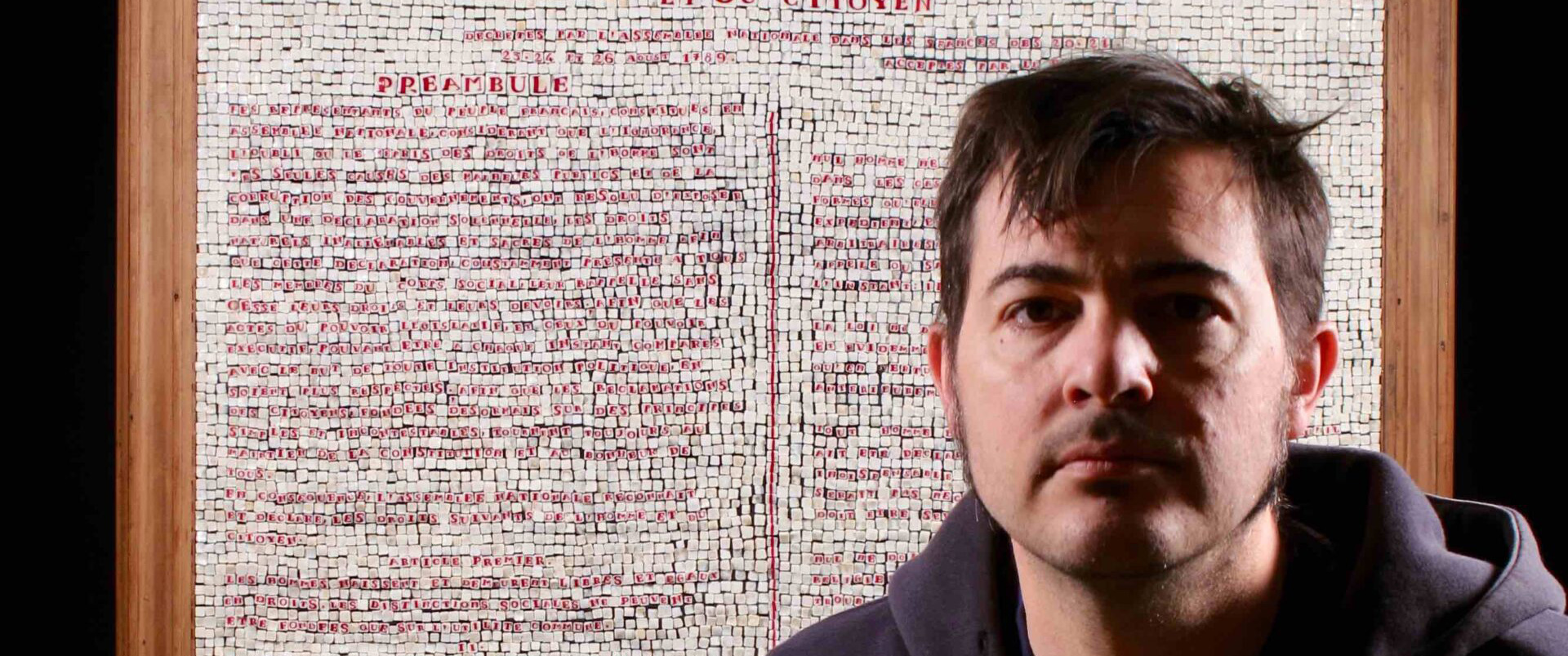First Place Winner of Your Bead for Venice 2024
by Laura Simone
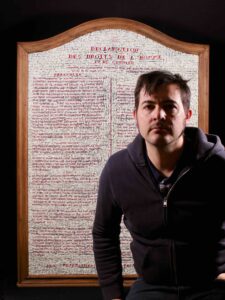
Mathieu Grodet, Infinite Variety
“This bead features four murrine elements that I created in Moretti glass: a circular window with a portrait of Marchesa Luisa
Casati, a quote from the Marchesa is contained in a rectangular shape, a square holds a signature with year, and the fourth is a star. The openings have a yellow band. The quote reads, “I see myself. I feel as if I am a lion.”
This work is inspired by the eccentric life of Marchesa Luisa Casati, who lived for a time in Venice. She was a patron of the arts who was also driven to be “a living work of art.” She was
a muse and friend to Diaghilev, Picasso and Proust, as well as the subject of poets, artists, sculptors and designers such as Man Ray, Erté and Federico Beltrán Masses. The portrait I chose to create in glass is one of her most famous—a painting by Augustus John.
The title of this bead, “Infinite Variety,” is from a line in Shakespeare’s Antony and Cleopatra (“Age cannot wither her, nor custom stale her infinite variety”) and can be found on her gravestone. 3.4 cm in width / 3.1 cm length/ 3 cm depth. Effetre/ Moretti Glass COE 104.
“The four elements integral to this piece are all murrine. The technique of murrine first appeared in Persia, North Africa and the Middle East thousands of years ago and was revived in the 15th century on Murano Island, Italy.
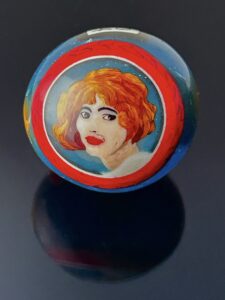
For my murrine, I used the Franchini technique in soft glass. In Murano in the 1800s, Giacomo Franchini began making complex creations and portraits using glass rods to build patterns. Using that inspiration, I flameworked components such as an eye or letter into glass canes and then added each cane to build a pattern. The components of each design are gathered, flame-worked, and then pulled and cut to create the full image. I then assembled the four murrine together and flameworked all the elements into a single bead.”
This bead, “Infinite Variety,” is influenced by a Venetian technique, and the subject of the portrait is an intriguing part of the city’s art history. As an admirer of Giacomo Franchini’s astonishing murrine portraits, I have been greatly influenced by his works and technique to create this bead. He was one of the founders of the modern murrini artistic practice and, of course, worked in Murano. The Effetre/Moretti glass used to create this bead was produced in Murano. A large element of this piece is the portrait of Marchesa Louisa Casati. For her image, I used the Franchini technique to assemble and pull cane to produce a Franchini-style shaded face. He was well known for his portraits of important figures of his time (mid 1800s), which were all male. I chose to represent an important female figure of another time (the early 1900s) who lived in Venice for many years. Marchesa Louisa Casati was a celebrated figure and icon in the art movement. Her days in Venice (1910- 1924) centered around her legendary soirées.
What advice would you give to a fellow artist who wanted to enter a competition, glass or otherwise?
Sometimes, entering a competition as an artist can feel antithetical to the idea of artistic expression. Art is deeply personal, and interpretations of your art are inherently subjective.
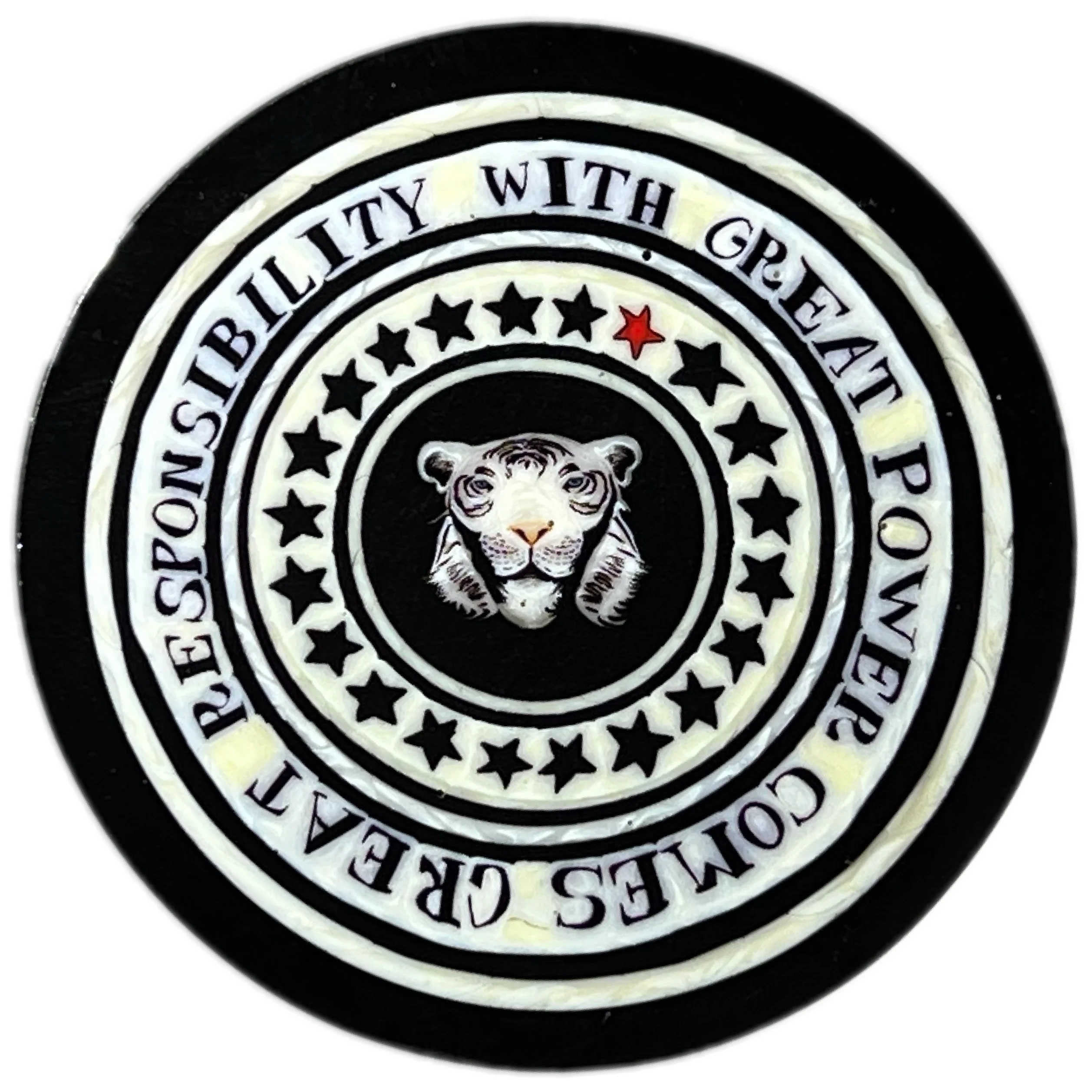 But, a competition can be a great space to showcase your practice and vision.So maybe just do it. If we don’t try, we will never know. And maybe we should not look at who else participated before; remove all self-imposed barriers.
But, a competition can be a great space to showcase your practice and vision.So maybe just do it. If we don’t try, we will never know. And maybe we should not look at who else participated before; remove all self-imposed barriers.
What was your experience of Glass Week in Venice and the Your Bead for Venice reception?
It was such an inspiring event! Many of us are constantly working, often alone, in our workshops, so it was good to be in the world outside the glass studio and to be in Venice—a place with such a profound glassmaking heritage.
Glass Week in Venice and the Your Bead for Venice reception created a space to engage, exchange, and discover with fellow artists and lovers of glass and an opportunity to gain a different perspective on my own work.
What do you do when you are not working with glass?
My life is glass. When I am not directly working with glass, I spend my time drawing glass. My first priority is always my daughter, building our home life, and exploring the world with her and my partner.
I also always dedicate part of my day to reading—mostly nonfiction about history, current events, and social issues from diverse perspectives. It keeps my brain charged and can even spark creativity.
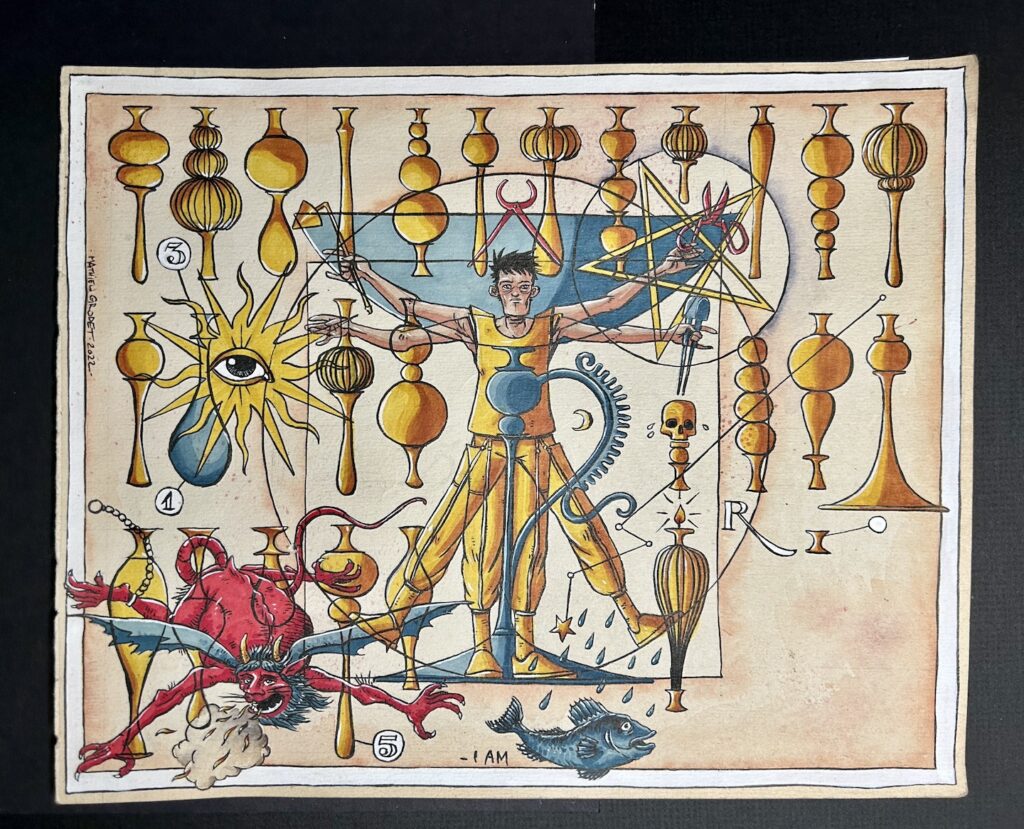
Why glass?
It is complex. It is very old. It is so new. It is solid.
It is fragile.
It is colorless. It is colorful.
It is shape.
It is moving.
It is fractions. It is a system. It is a phoenix. It is alive.
It is free.
Of course, there are many artists in France, where I started my path, who shared their knowledge with me—I am all of them today.
Outside of France, I must shout out Loren Stump for his dare, Bill Gudenrath for his method, the pipe world of Salt, Coyle and others for their freshness, Tom Moore for his dream, Philip Baldwin and Monica Guggisberg for their focus, Dante Marioni for his skills, Ross Delano for his freedom, Andy Payko for his attention to detail, Kimberly Thomas for her vision, Alex Rosenberg for pushing thinness beyond, Paul Stankard for his research for excellence and Tonbodama Shokunin for his planning but also the great Albert Durer for his lines and dedications, and so many more, we can learn from everyone.
